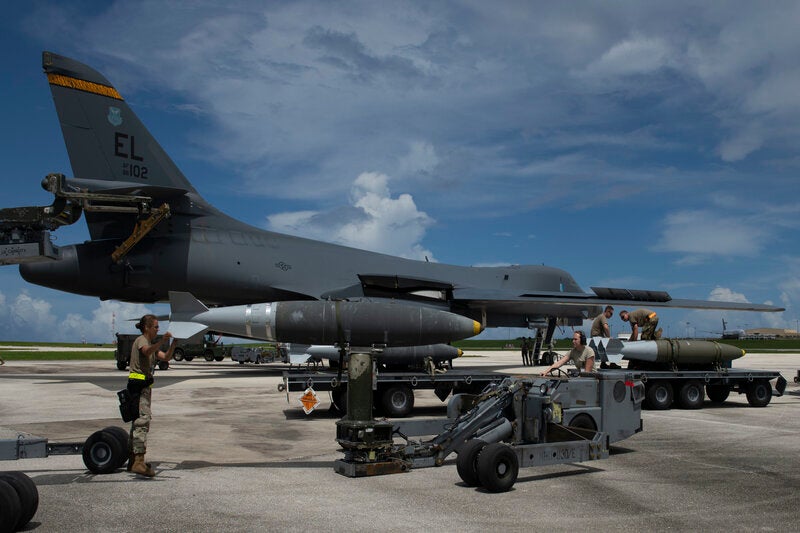
The US Air Force’s B-1B Lancer bomber aircraft has conducted a bilateral mission with Japanese Air Self-Defense Force (JASDF) and a joint mission with the US Navy in the Indo-Pacific region.
The 37th Expeditionary Bomb Squadron’s B-1 lancer launched from Andersen Air Force Base (AFB) and integrated with JASDF‘s eight F-2s and six F-15s in Japan.
The operation focused on improving the interoperability and readiness of the two nations’ forces.
37th Expeditionary Bomb Squadron commander Lieutenant Colonel Lincoln Coleman said: “Opportunities to train alongside our joint partners and allies in the region are an invaluable experience for our Airmen.
“Not only are we able to highlight our continued commitment to our allies, but it also increases our ability to integrate with one another and strengthen our combined capabilities.”
The aircraft also conducted joint war training with the USS Ronald Reagan Carrier Strike Group (CSG) in the Sea of Japan.
US Navy Task Force 70 air operations officer Commander Joshua Fagan said: “Integration with our joint partners is essential to ensuring joint force responsiveness and lethality and maintaining a free and open Indo-Pacific.
“The recent integrated training between our carrier strike group and Air Force B-1s is the latest example of how we are continually working to stay synched with all of our joint partners and ready to respond to any contingencies throughout the region.”
Aircrew of B-1B Lancer was deployed to Guam from Ellsworth AFB in South Dakota, US, to conduct long-range, long-duration Bomber Task Force missions in a joint environment.
The crew trained with allies and partners to build interoperability and enhance their ability to support an open Indo-Pacific.
The interoperability training is designed to promote stability, security and integration for the USAF and partner forces.



